December Auto Sales Still Looking Weak

While the official figures haven’t dropped, just about every outlet tracking new vehicle sales is projecting a significant decline in volume for December 2021. Showrooms have been trending toward the minimalist aesthetic since 2019 with the pandemic kicking things into overdrive as supply bottlenecks nullified practically every manufacturer’s ability to produce anywhere near its normal pace.
Last December was bleak, with sales falling by around 5 percent for the month as the typical transaction price for automobiles set new records. The U.S. market only saw 1.54 million sales, the lowest volume witnessed since December of 2014. But 2021 volumes are shaping up to be decidedly worse. This month is on track to fall by anywhere from 23 to 30 percent with retail sales barely cresting 1 million units as transaction prices for both new and used vehicles surpass all previous metrics.
The exact number depends on who you’re asking and ultimately hinges on what reality brings after the figures are tallied in January. However J.D. Power, LMC Automotive, and TrueCar are all forecasting light vehicle sales to be down by anywhere from a quarter to a third year-over-year right now.
“Historically, December is a big month for the industry as OEMs and dealerships work to close out the calendar year with strong sales. The last week of the month is also typically the biggest week of the year in terms of sales volumes but it’s unlikely to happen this year due to continued inventory shortages and declining incentives,” said Nick Woolard, Lead Industry Analyst at TrueCar.
TueCar estimated retail sales to be down by 27 this December (YOY), planting its assessment smack-dab in the middle of other outlets. Though they’re all expecting volumes to be low this year with dwindling incentive spending usually receiving an honorable mention. Automakers were already abandoning incentives by the start of 2020. But spending for 2021 is down another 55 percent vs last year. Meanwhile, fleet volumes for December 2021 are expected to be down 29 percent from a year ago and down 3 percent from November 2021 (adjusted for the same number of selling days).
The truth of the matter is simply that automakers now have a captive audience. With fewer cars being constructed, there are far fewer on the lot. Average new car inventories were a staggeringly low 15 days in November. For the sake of comparison, normal inventories would have been somewhere in the 50-70 day range just a couple of years ago. Though we’ve already discussed the absolutely grotesque ways this has influenced pricing, so we’ll not risk depressing you again. Suffice it to say, new vehicle prices have continued to climb another 2.5 percent within the last month and we understand if you need to take a break from reading to angrily curse for a few minutes.
We suppose that the good news is that dealerships have remained quite profitable, provided they were large enough. According to the National Automobile Dealers Association, retailers actually recorded an average pretax profit of $3 million through the first nine months of 2021 — more than twice what they accomplished in 2020 within the same timeframe. Manufacturers may not be breaking records like dealerships are, however, most are performing decently despite there being a general lack of sales over the last two years. Some brands are even doing quite well (e.g. Jeep, Porsche) while others are just trying to hang in there (e.g. Cadillac, Infiniti, Aston Martin).
The industry is still estimated to have $200 billion lopped off the top due to complications stemming from parts shortages (specifically absent semiconductors) though. Just about everyone wants to know when this is going to end. We assumed pricing had gotten so out of whack by the summer of 2021 that they couldn’t possibly continue climbing without the whole economy being thrown out of whack. We even got promising news from a few suppliers that the issue was becoming more manageable, with parts shipments allegedly becoming more routine over the fall. But prices climbed anyway as vehicle inventories continued to fall, leaving us more than a little befuddled on the long-term ramifications.
Apparently, we aren’t alone in that feeling.
“In October we were seeing initial signs that the worst may be behind us in terms of inventory shortages. We continue to see signals of stability and in some cases, slight improvement. One such indicator, our scarcity measure, shows improvement in recent months for both new and used vehicles,” stated Valeri Tompkins, Senior Vice President of OEM Solutions at TrueCar. “However, questions still remain as to the trajectory of improvement we can expect to see in 2022.”
[Image: Mikbiz/Shutterstock.com]

A staunch consumer advocate tracking industry trends and regulation. Before joining TTAC, Matt spent a decade working for marketing and research firms based in NYC. Clients included several of the world’s largest automakers, global tire brands, and aftermarket part suppliers. Dissatisfied with the corporate world and resentful of having to wear suits everyday, he pivoted to writing about cars. Since then, that man has become an ardent supporter of the right-to-repair movement, been interviewed on the auto industry by national radio broadcasts, driven more rental cars than anyone ever should, participated in amateur rallying events, and received the requisite minimum training as sanctioned by the SCCA. Handy with a wrench, Matt grew up surrounded by Detroit auto workers and managed to get a pizza delivery job before he was legally eligible. He later found himself driving box trucks through Manhattan, guaranteeing future sympathy for actual truckers. He continues to conduct research pertaining to the automotive sector as an independent contractor and has since moved back to his native Michigan, closer to where the cars are born. A contrarian, Matt claims to prefer understeer — stating that front and all-wheel drive vehicles cater best to his driving style.
More by Matt Posky
Latest Car Reviews
Read moreLatest Product Reviews
Read moreRecent Comments
- Jalop1991 In a manner similar to PHEV being the correct answer, I declare RPVs to be the correct answer here.We're doing it with certain aircraft; why not with cars on the ground, using hardware and tools like Telsa's "FSD" or GM's "SuperCruise" as the base?Take the local Uber driver out of the car, and put him in a professional centralized environment from where he drives me around. The system and the individual car can have awareness as well as gates, but he's responsible for the driving.Put the tech into my car, and let me buy it as needed. I need someone else to drive me home; hit the button and voila, I've hired a driver for the moment. I don't want to drive 11 hours to my vacation spot; hire the remote pilot for that. When I get there, I have my car and he's still at his normal location, piloting cars for other people.The system would allow for driver rest period, like what's required for truckers, so I might end up with multiple people driving me to the coast. I don't care. And they don't have to be physically with me, therefore they can be way cheaper.Charge taxi-type per-mile rates. For long drives, offer per-trip rates. Offer subscriptions, including miles/hours. Whatever.(And for grins, dress the remote pilots all as Johnnie.)Start this out with big rigs. Take the trucker away from the long haul driving, and let him be there for emergencies and the short haul parts of the trip.And in a manner similar to PHEVs being discredited, I fully expect to be razzed for this brilliant idea (not unlike how Alan Kay wasn't recognized until many many years later for his Dynabook vision).
- B-BodyBuick84 Not afraid of AV's as I highly doubt they will ever be %100 viable for our roads. Stop-and-go downtown city or rush hour highway traffic? I can see that, but otherwise there's simply too many variables. Bad weather conditions, faded road lines or markings, reflective surfaces with glare, etc. There's also the issue of cultural norms. About a decade ago there was actually an online test called 'The Morality Machine' one could do online where you were in control of an AV and choose what action to take when a crash was inevitable. I think something like 2.5 million people across the world participated? For example, do you hit and most likely kill the elderly couple strolling across the crosswalk or crash the vehicle into a cement barrier and almost certainly cause the death of the vehicle occupants? What if it's a parent and child? In N. America 98% of people choose to hit the elderly couple and save themselves while in Asia, the exact opposite happened where 98% choose to hit the parent and child. Why? Cultural differences. Asia puts a lot of emphasis on respecting their elderly while N. America has a culture of 'save/ protect the children'. Are these AV's going to respect that culture? Is a VW Jetta or Buick Envision AV going to have different programming depending on whether it's sold in Canada or Taiwan? how's that going to effect legislation and legal battles when a crash inevitibly does happen? These are the true barriers to mass AV adoption, and in the 10 years since that test came out, there has been zero answers or progress on this matter. So no, I'm not afraid of AV's simply because with the exception of a few specific situations, most avenues are going to prove to be a dead-end for automakers.
- Mike Bradley Autonomous cars were developed in Silicon Valley. For new products there, the standard business plan is to put a barely-functioning product on the market right away and wait for the early-adopter customers to find the flaws. That's exactly what's happened. Detroit's plan is pretty much the opposite, but Detroit isn't developing this product. That's why dealers, for instance, haven't been trained in the cars.
- Dartman https://apnews.com/article/artificial-intelligence-fighter-jets-air-force-6a1100c96a73ca9b7f41cbd6a2753fdaAutonomous/Ai is here now. The question is implementation and acceptance.
- FreedMike If Dodge were smart - and I don't think they are - they'd spend their money refreshing and reworking the Durango (which I think is entering model year 3,221), versus going down the same "stuff 'em full of motor and give 'em cool new paint options" path. That's the approach they used with the Charger and Challenger, and both those models are dead. The Durango is still a strong product in a strong market; why not keep it fresher?



















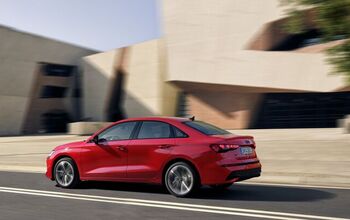



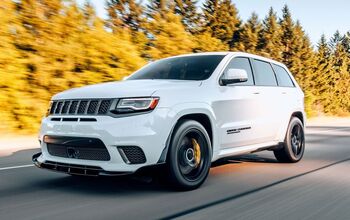
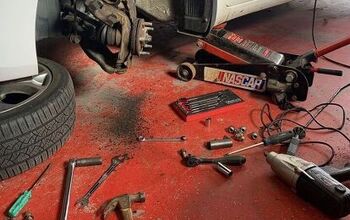
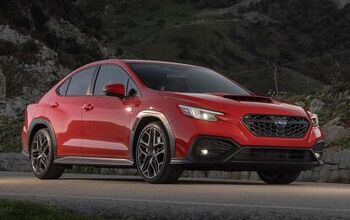
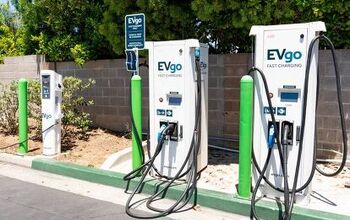
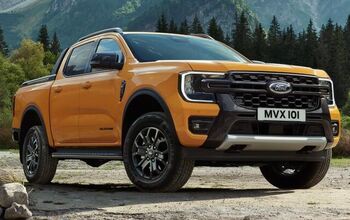
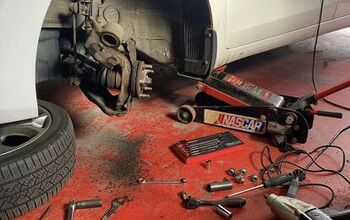
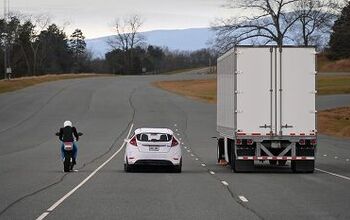
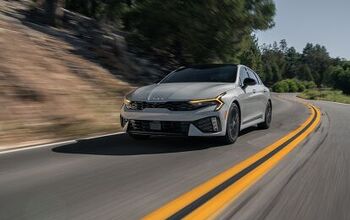
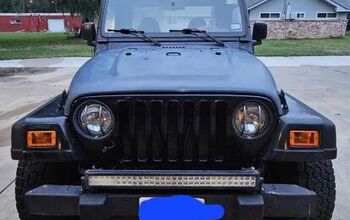
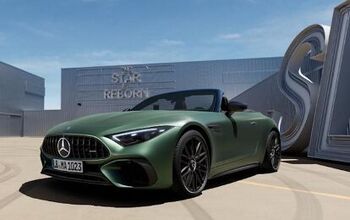
Comments
Join the conversation
@BSttac You are a good indicator. In 1973, 15 million new cars/trucks sold in the US, population was about 210 million. In 2017-18, 17 million units sold, US population about 320 million. In 1973, one new vehicle for every 14 Americans. In 2018, one new vehicle for every 19 Americans. Yes, I know some one will tell me the "inflation-adjusted" price of a car is less, blah-blah. The inflation-adjusted AFTER TAX, after medical/insurance/education of middle America is a lot less. The essential function of a vehicle, being secure from weather and self-propelled, remains the same, regardless of how many speakers, air bags, power assists, etc. However, cars do last longer, and require less maintenance. Pricier cars, less money (pursuing MORE products and services than ever) mean less new car sales per capita. I enjoy visiting here, but I like and appreciate your name.
A dead center mid level Toyota RAV4 is the most average car I can imagine. That cost $36,343 before tax but includes destination fee. Figure you're out the door right at $40k. For the most average vehicle I can imagine. There are better cars for less (GLI, Civic Si, Accord) but those sedans are less desirable than the SUV.